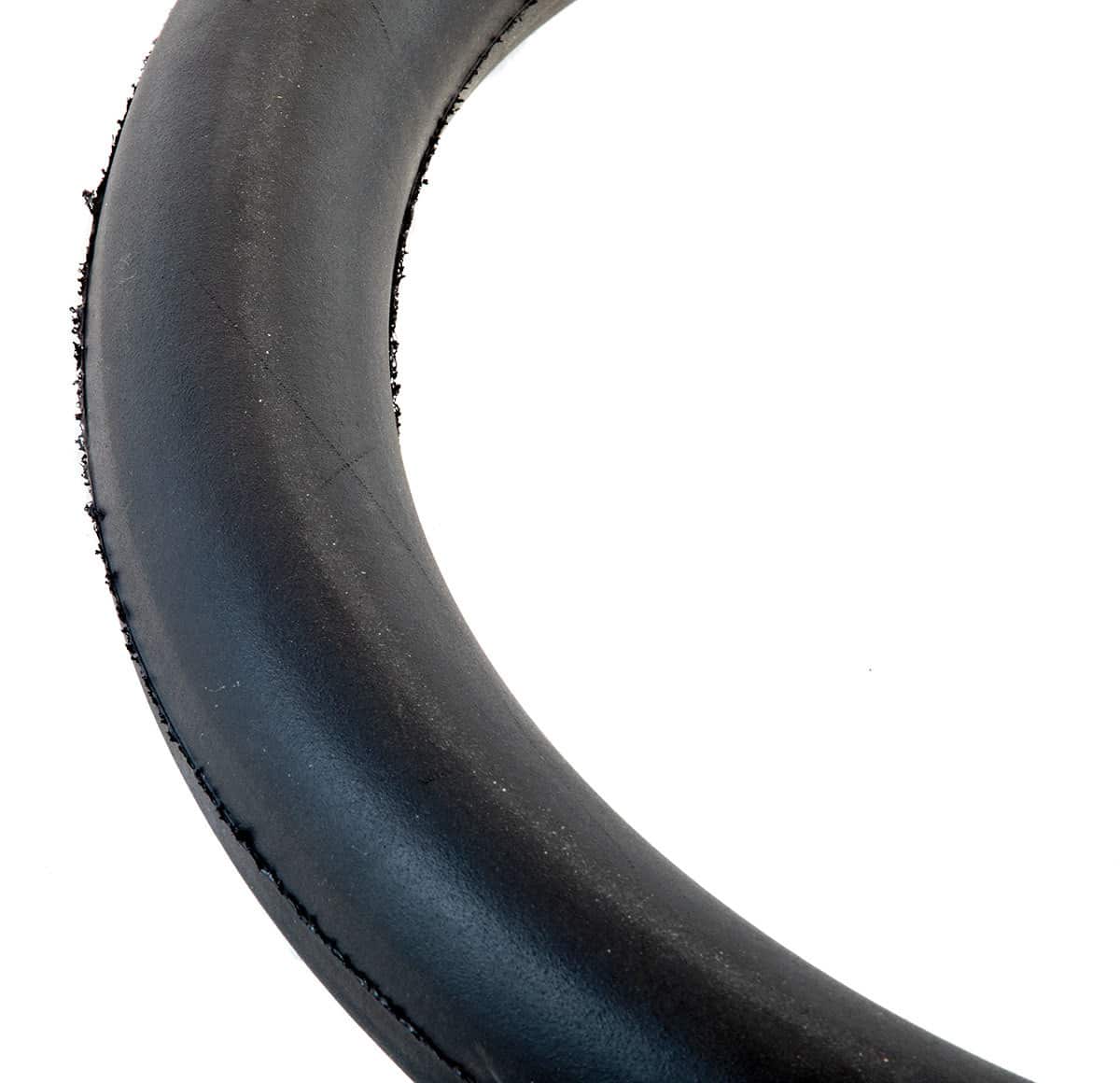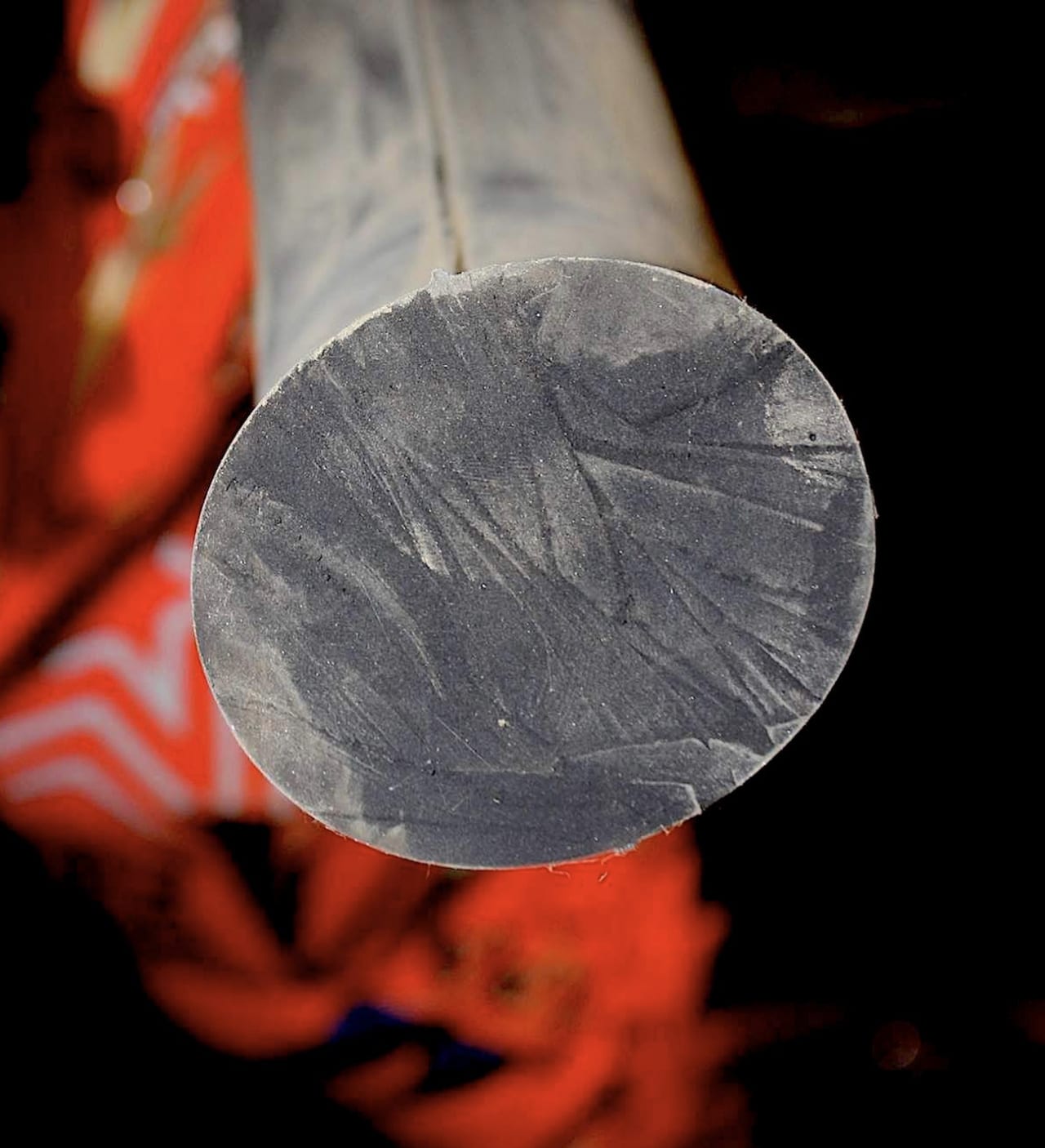MXA TEAM TESTED: NITROMOUSSE ELASTOMER FOAM TUBES
 WHAT IS IT? Nitromousses differ from typical offroad mousses used by desert and Baja racers in that the Nitromousse’s tube-shaped elastomer foam is charged with nitrogen instead of air. The nitrogen provides a livelier and more predictable feel than the typical mousse. Nitromousse makes two different models. The standard Nitromousse mimics the 12 psi of the typical motocross set-up. The latest Nitromousse is the “Soft” version—it mimics 8 psi. The soft version is designed for slow-go motorcycle events like Endurocross, rock garden rides and muddy woods. No matter which Nitromousse model fits you choose, the best thing about a Nitromousse is that it can never go flat.
WHAT IS IT? Nitromousses differ from typical offroad mousses used by desert and Baja racers in that the Nitromousse’s tube-shaped elastomer foam is charged with nitrogen instead of air. The nitrogen provides a livelier and more predictable feel than the typical mousse. Nitromousse makes two different models. The standard Nitromousse mimics the 12 psi of the typical motocross set-up. The latest Nitromousse is the “Soft” version—it mimics 8 psi. The soft version is designed for slow-go motorcycle events like Endurocross, rock garden rides and muddy woods. No matter which Nitromousse model fits you choose, the best thing about a Nitromousse is that it can never go flat.
WHAT’S IT COST? $124.95.
CONTACT? www.nitromousse.com or (608) 301-6764.
WHAT STANDS OUT? Here’s a list of things that stand out with Nitromousse elastomer foam tubes.
(1) Purpose. The reason that racers choose to run mousses instead of air-filled tubes is to eliminate the chance of flats. It takes all the worry away. Nitromousse get its name because the foam mixture contains a high concentration of nitrogen in the micro-bubble-matrix of the elastomer foam. This lessens the dead feel of a normal mousse and provides a much more lively feel.
(2) Installation. We wish there was an easier way, but expect to sweat, swear and simmer trying to squeeze a mousse into a tire. We used a Kauritmoto TMT3 tire-changing tool, five tire irons and a Bead Buddy. It helps that you can’t pinch the tube during installation, but you can snap the tire’s bead if you get too forceful. We know ISDT riders who can change a mousse in under five minutes—not us. Which is why we consulted with experienced mousse users before even thinking about putting mousses in our wheels. Once you get a little guidance and see the installation process done, you will find life a lot easier when installing mousses for the first time. Nitromousse does provide a how-to video on its website.

(3) Air pressure. In the first 30 minutes, the Nitromousse feels like it has 15 pounds in it. Once broken in, it delivers the same feel as a tube with 12 psi in it (this can be confirmed by a squeeze-test comparison against a tire with a tube). Once it gets to 12 psi, it holds that pressure through many motos, but if you want it to feel softer it will eventually get softer the more you ride on it. The lifespan of a Nitromousse depends on how you use it. It will certainly last longer than the knobs on a motocross tire in normal racing. We used our rear Nitromousse for three rear tire changes. We estimate that it got down to about 8 psi at the end of the third tire’s knobs (and because it can’t go flat, it actually performed really well at this low pressure). If you run it too long, it will get softer, shrink and eventually deteriorate inside the tire.
(4) Performance. Compared to a standard-issue offroad mousse, the Nitromousse was a champ. It wasn’t as dead feeling or wallowy as most mousses. But, MXA wasn’t interested in comparing it to another mousse as much as to an air-filled tube. We started with Dunlop MX3S tires—one set with tubes set at 12 psi and one with Nitromousses. In back-to-back tests, we came to these conclusions:
(a) If fear of flats is a major concern, you can run the Nitromousses without worrying about washing out or sliding around. They deliver a different feel, but it’s not a deal-breaker. Riders who use mousses all the time, prefer the feel to that of the tube.
(b) The front tire worked best in good dirt where it could be pushed. It was at its worst in off-throttle entrances to turns, where the front tire rolled over when not being pressed against the ground by power. The air-filled, tubed front tire was much better in these situations because you could vary the air pressure to meet the track’s demands. This led us eventually to only run mousses in the rear tire, which happens to be where we get 75 percent of our flat tires with tubes.
(c) The Nitromousse rear tire was a hit. Although not better than the air-filled tube, it wasn’t far off the mark. Plus, it can never go flat.
(d) The phrase most commonly used to refer to mousses is “dead feeling.” Guess what? The Nitromousses do feel dead in the bumps compared to an air-filled tube. Every test rider said the same thing: “The tires worked okay, but the tires thud through braking and square-edged bumps. I could feel every thud.”
(e) Would we run them? We do run them for long trail rides—especially ones where a flat tire would be a serious problem—which is why Nitromousses work best for riders who can’t afford a flat tire. Virtually every FIM MXGP rider runs mousses. These racers don’t want to fly all the way to Indonesia only to get a flat tire. AMA National riders will run mousses on rocky tracks, but for the majority of the time they stick with tubes. The MXA wrecking crew was surprised by how well the Nitromousses performed, but the big draw is their flat-proof capability. Given their druthers, the test riders preferred air-filled tubes.
 A mousse is a solid foam tube, unlike an air-filled tube it gets its density, AKA air pressure, from the molding composition of the foam. Typically they mimic 12 psi.
A mousse is a solid foam tube, unlike an air-filled tube it gets its density, AKA air pressure, from the molding composition of the foam. Typically they mimic 12 psi.
WHAT’S THE SQUAWK? We have a few: (1) They are expensive at $124.95. (2) They are heavy (about 4-1/2 pounds for the rear and 3 pounds for the front). (3) If you have trouble changing a normal tire and tube, the Nitromousse will scar you for life. (4) Nitromousses come in specific sizes, luckily there is a chart on the Nitromousse website that allows you to match up almost any tire to the properly sized Nitromousse tube.
MXA RATING: The Nitromousse is the first mousse that can be used in motocross without having to make too many compromises. It works better as it gets broken in and never has to have the tire pressure checked. The one compromise that you’ll never have to make is nursing a flat tire back to the pits.




Comments are closed.